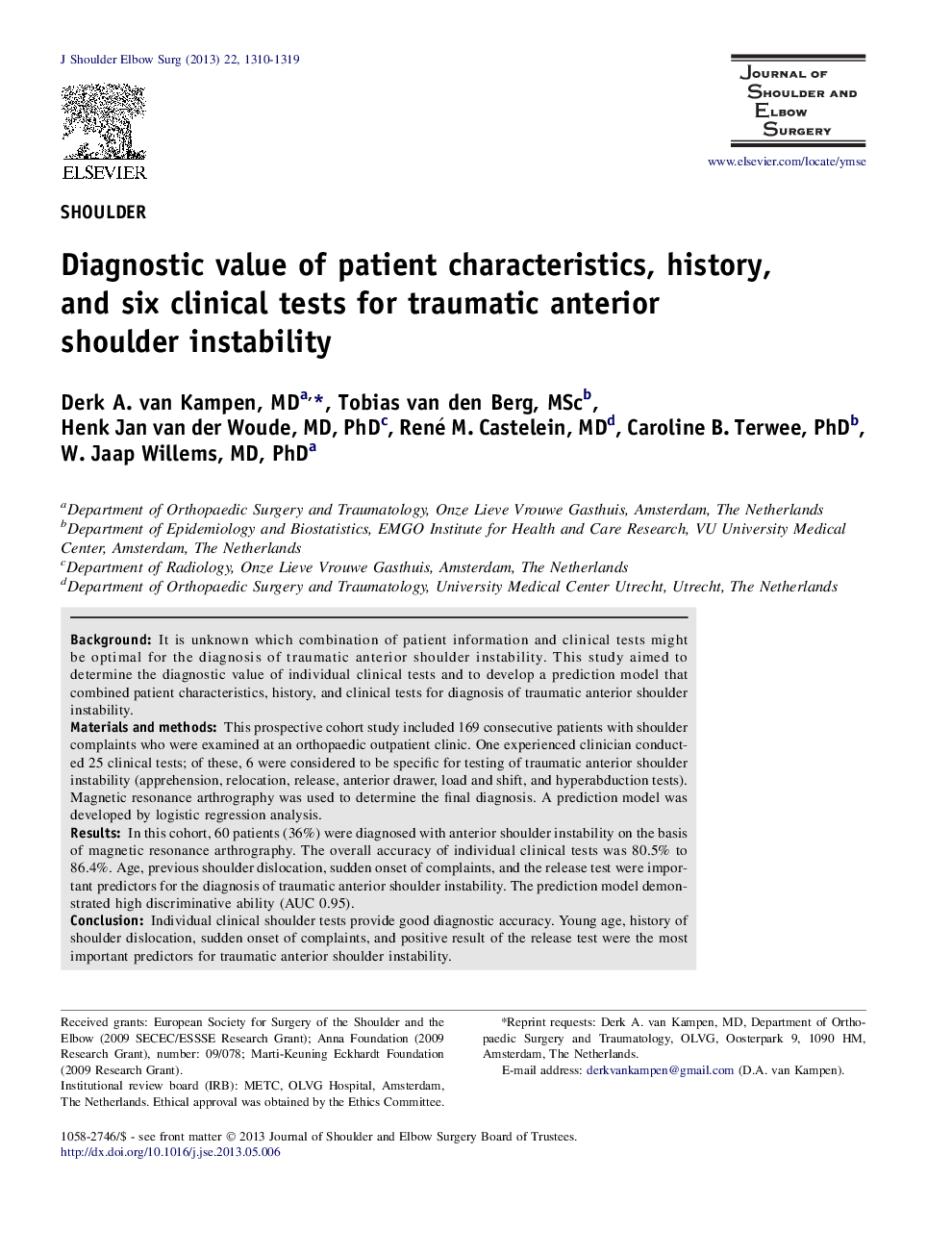| Article ID | Journal | Published Year | Pages | File Type |
|---|---|---|---|---|
| 4074009 | Journal of Shoulder and Elbow Surgery | 2013 | 10 Pages |
BackgroundIt is unknown which combination of patient information and clinical tests might be optimal for the diagnosis of traumatic anterior shoulder instability. This study aimed to determine the diagnostic value of individual clinical tests and to develop a prediction model that combined patient characteristics, history, and clinical tests for diagnosis of traumatic anterior shoulder instability.Materials and methodsThis prospective cohort study included 169 consecutive patients with shoulder complaints who were examined at an orthopaedic outpatient clinic. One experienced clinician conducted 25 clinical tests; of these, 6 were considered to be specific for testing of traumatic anterior shoulder instability (apprehension, relocation, release, anterior drawer, load and shift, and hyperabduction tests). Magnetic resonance arthrography was used to determine the final diagnosis. A prediction model was developed by logistic regression analysis.ResultsIn this cohort, 60 patients (36%) were diagnosed with anterior shoulder instability on the basis of magnetic resonance arthrography. The overall accuracy of individual clinical tests was 80.5% to 86.4%. Age, previous shoulder dislocation, sudden onset of complaints, and the release test were important predictors for the diagnosis of traumatic anterior shoulder instability. The prediction model demonstrated high discriminative ability (AUC 0.95).ConclusionIndividual clinical shoulder tests provide good diagnostic accuracy. Young age, history of shoulder dislocation, sudden onset of complaints, and positive result of the release test were the most important predictors for traumatic anterior shoulder instability.
